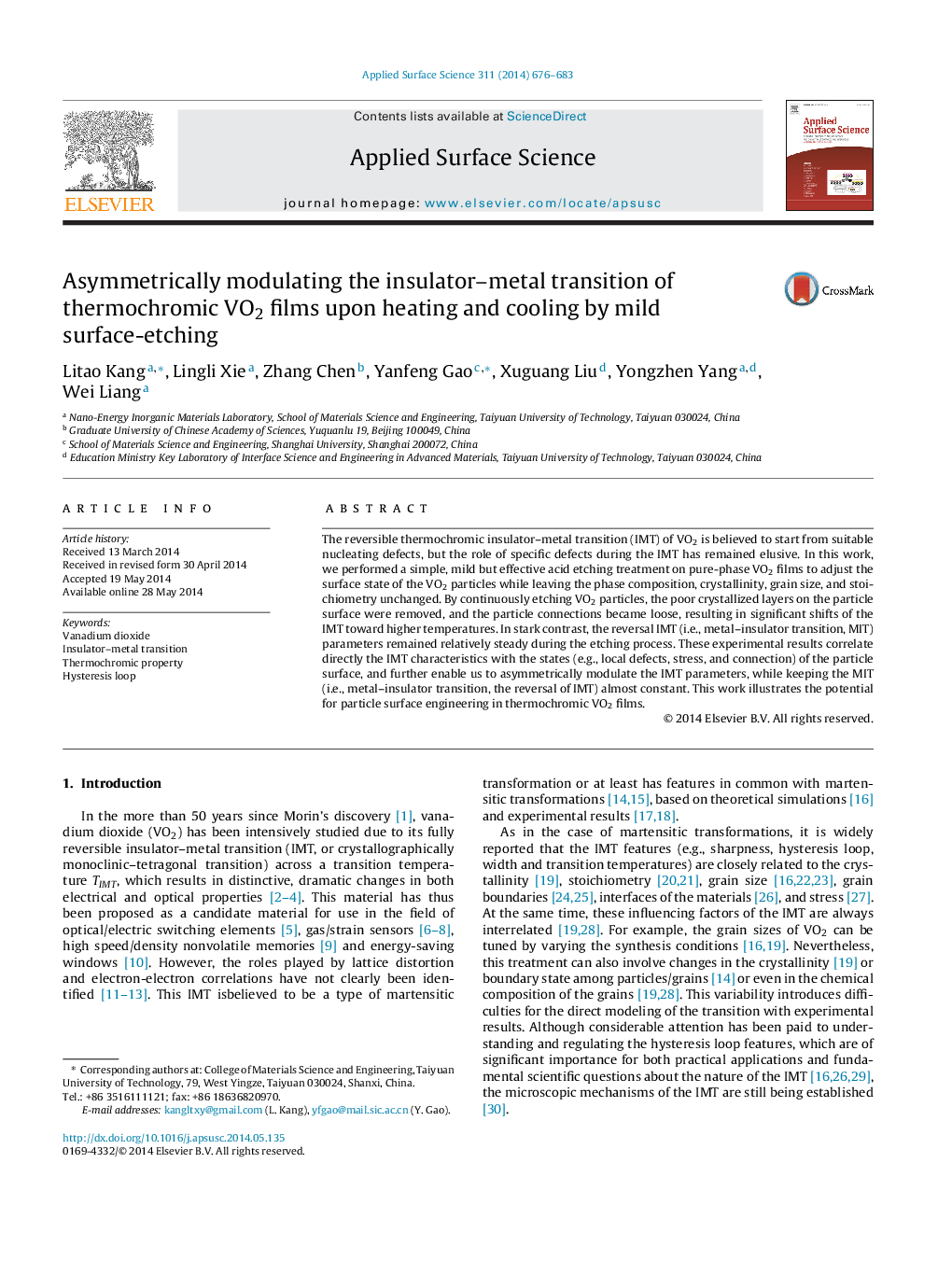| Article ID | Journal | Published Year | Pages | File Type |
|---|---|---|---|---|
| 5361404 | Applied Surface Science | 2014 | 8 Pages |
â¢A mild acid etching treatment on VO2 films was performance to adjust the surface state of the VO2 particles, while leaving the phase composition, crystallinity, grain size, and stoichiometry unchanged.â¢Acid etching affects only the IMT (insulator-metal transition) characteristics of films, but keeps MIT properties almost constant.â¢These results directly correlate the nucleation of metal-phase VO2 with surface-localized defects, suggesting a potential particle surface engineering to independently regulate MIT and IMT.
The reversible thermochromic insulator-metal transition (IMT) of VO2 is believed to start from suitable nucleating defects, but the role of specific defects during the IMT has remained elusive. In this work, we performed a simple, mild but effective acid etching treatment on pure-phase VO2 films to adjust the surface state of the VO2 particles while leaving the phase composition, crystallinity, grain size, and stoichiometry unchanged. By continuously etching VO2 particles, the poor crystallized layers on the particle surface were removed, and the particle connections became loose, resulting in significant shifts of the IMT toward higher temperatures. In stark contrast, the reversal IMT (i.e., metal-insulator transition, MIT) parameters remained relatively steady during the etching process. These experimental results correlate directly the IMT characteristics with the states (e.g., local defects, stress, and connection) of the particle surface, and further enable us to asymmetrically modulate the IMT parameters, while keeping the MIT (i.e., metal-insulator transition, the reversal of IMT) almost constant. This work illustrates the potential for particle surface engineering in thermochromic VO2 films.
Graphical abstractDownload full-size image
